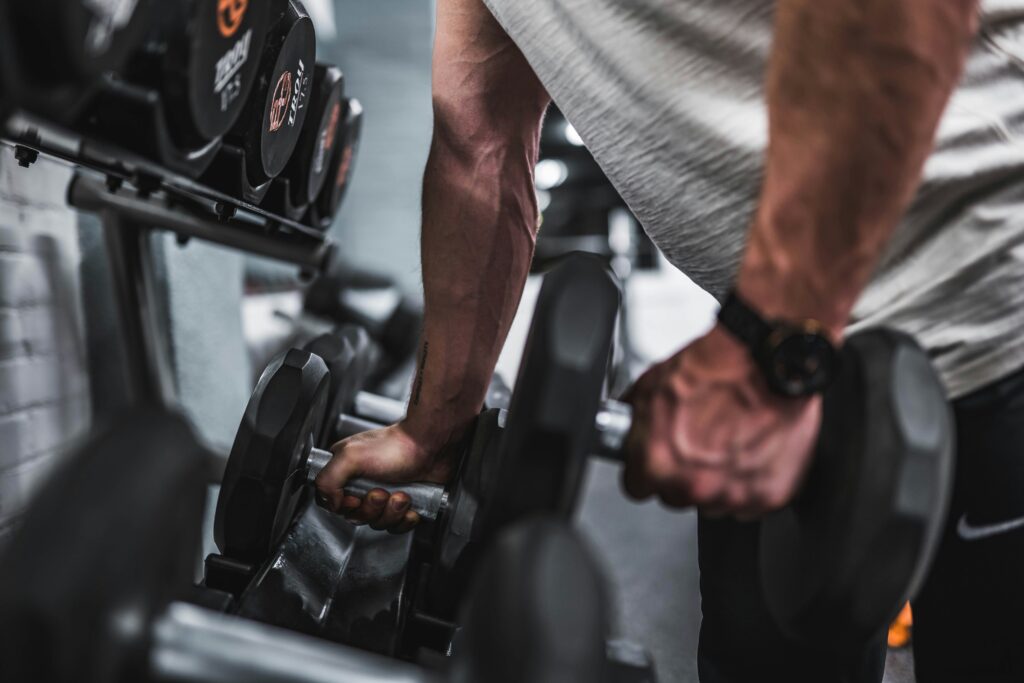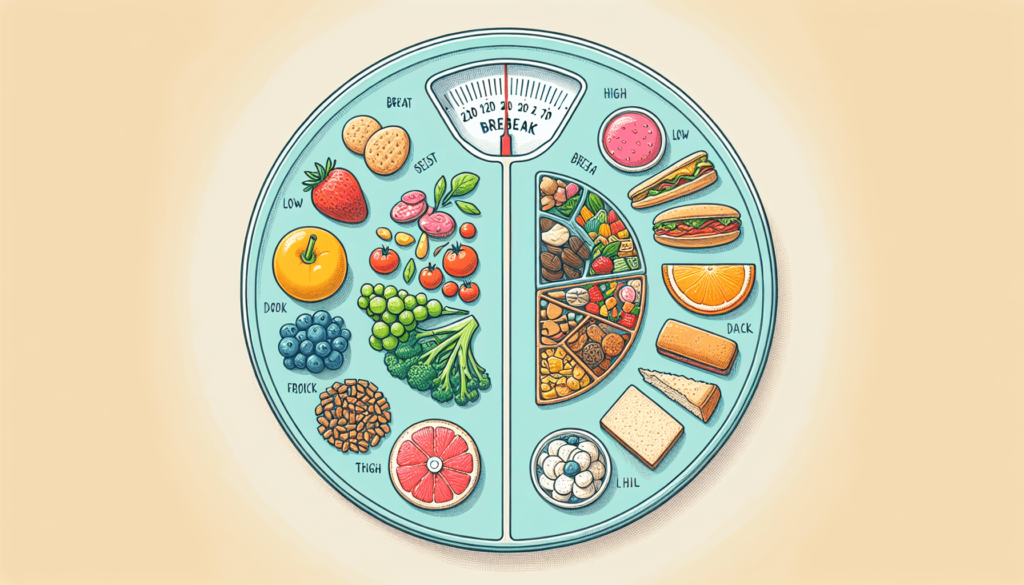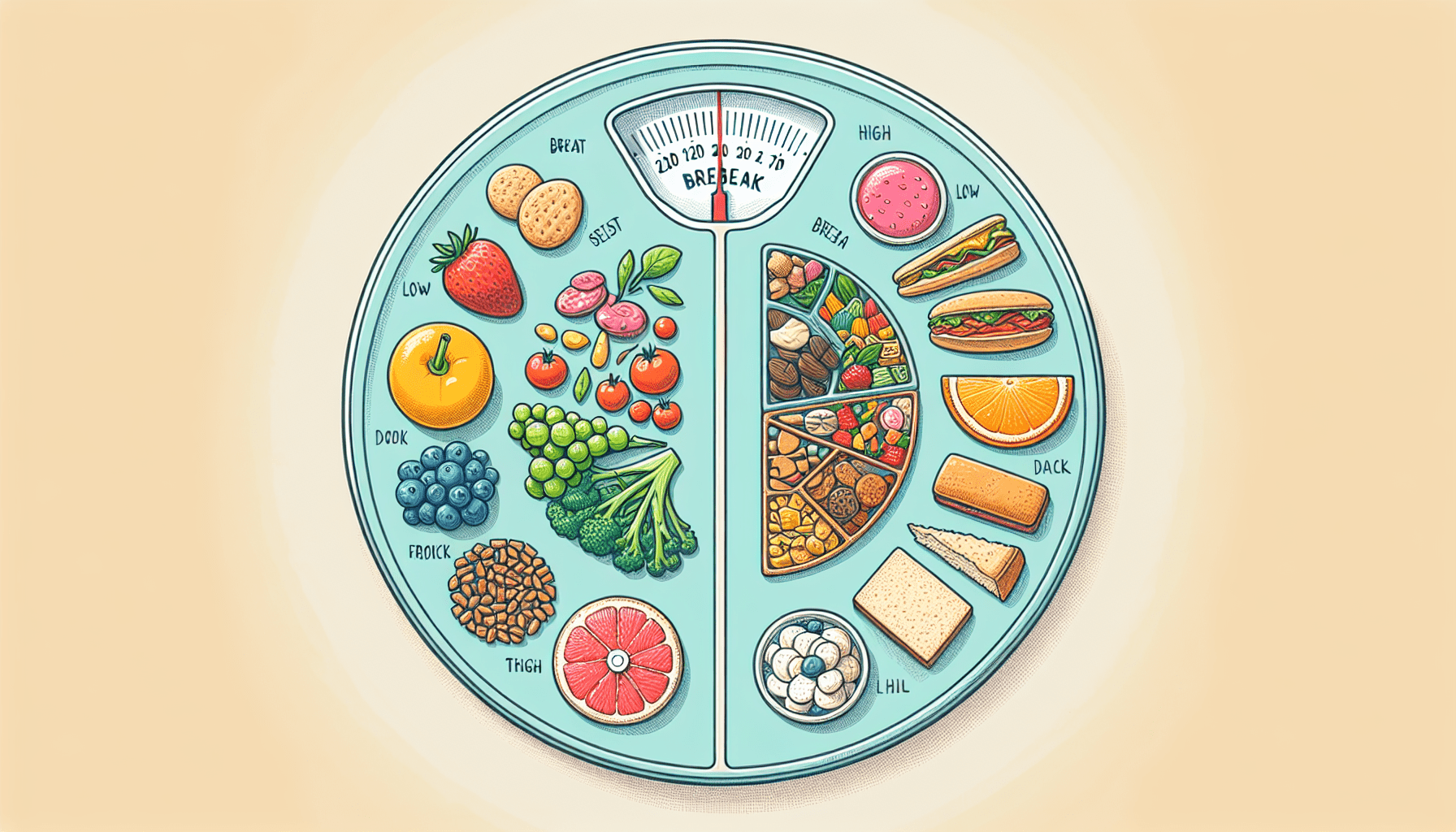Are you trying to improve your eating habits for weight loss or muscle gain, but find yourself confused about the difference between a diet break and reverse dieting? In this article, we will break down the distinctions between these two approaches to help you understand which one is best suited for your goals. Whether you’re looking to give your body a rest from strict calorie restriction or gradually increase your food intake after a period of dieting, this article will provide clarity on the benefits of each method. So, let’s get started and unravel the mystery of diet breaks and reverse dieting!

Understanding the Difference Between Diet Break and Reverse Dieting
When it comes to achieving your fitness goals, it’s important to have a comprehensive understanding of various diet strategies. Two commonly used approaches are diet break and reverse dieting. While they may sound similar, they actually differ in their purpose and implementation. In this article, we will define each of these strategies, explore their benefits, and discuss how to implement them effectively. By the end, you’ll have a clear understanding of when to choose a diet break or opt for reverse dieting.
Definition of Diet Break
A diet break refers to a period of time, typically lasting one to two weeks, where you temporarily increase your caloric intake and relax the restrictions of your diet. This break allows your body to recover from the stress of dieting and provides a reset for your metabolism. During a diet break, you still maintain a structured eating plan but consume slightly more calories, giving your body a much-needed break from the usual calorie deficit.
Definition of Reverse Dieting
Reverse dieting, on the other hand, is a gradual increase in caloric intake after a period of dieting. It involves slowly adding calories back into your diet to prevent rapid weight regain and to allow your metabolism to adapt to the increased energy intake. Reverse dieting is often used as a long-term strategy for weight maintenance and sustainable lifestyle changes.
Benefits of Diet Break
Metabolic Repair
One of the key benefits of a diet break is metabolic repair. When you go into a caloric deficit for an extended period of time, your metabolism can slow down as a result of adaptive thermogenesis. Taking a diet break helps to reverse this slowdown by temporarily increasing your calorie intake. This allows your metabolism to reset, preventing it from adapting by slowing down further.
Prevention of Metabolic Adaptation
Dieting for long periods of time can cause metabolic adaptation. This means that your body becomes more efficient at using the calories you consume, making it harder to continue losing weight. By incorporating diet breaks, you can prevent or minimize this metabolic adaptation, making it easier for you to continue making progress towards your goals.
Improved Hormonal Balance
Long periods of dieting can disrupt hormonal balance, particularly in women. Hormones such as leptin, ghrelin, and thyroid hormones play a crucial role in regulating metabolism, hunger, and satiety. Diet breaks help to improve hormonal balance by temporarily restoring these hormones to their optimal levels, improving your overall well-being.
Relief from Dieting Stress
Constantly being in a calorie deficit can be mentally and emotionally challenging. Diet breaks provide a much-needed break from the strictness of your diet, allowing you to enjoy some of your favorite foods guilt-free. This relief from dieting stress can help improve your overall relationship with food and make your weight loss journey more sustainable in the long run.
Enhanced Mental Well-being
In addition to relieving dieting stress, diet breaks have been shown to enhance mental well-being. By taking a break from the demands of your diet, you can experience an improved mood, reduced feelings of deprivation, and increased motivation to stick with your long-term goals. A happier mind can lead to better overall compliance and success in achieving your fitness goals.
Temporary Increase in Caloric Intake
During a diet break, you have the opportunity to increase your calorie intake, albeit temporarily. This can be a great way to satisfy your cravings and enjoy the foods you love without derailing your progress. It’s important to note that this increase in calories should not be excessive and should still align with your overall macronutrient and calorie goals.

Benefits of Reverse Dieting
Gradual Metabolic Adaptation
After a period of dieting, reverse dieting allows your metabolism to gradually adapt to increased caloric intake. By slowly adding calories back into your diet, you can avoid the shock to your system that can lead to rapid weight regain. This method helps your body adjust to the new energy intake without causing metabolic distress.
Improved Long-Term Weight Maintenance
Reverse dieting is often used as a long-term strategy for weight maintenance. By gradually increasing your caloric intake, you can find a balance where you can sustain your weight without constant food restriction. This approach promotes a healthier relationship with food and allows for more flexibility in your day-to-day eating habits.
Reduced Risk of Weight Regain
One of the biggest concerns after dieting is the risk of weight regain. Reverse dieting can help mitigate this risk by reintroducing calories slowly and methodically. This gradual approach allows your body to adapt to the increased energy intake, reducing the likelihood of significant weight regain.
Increased Caloric Intake without Excessive Fat Gain
Reverse dieting also allows you to increase your caloric intake without excessive fat gain. By closely monitoring your progress and adjusting your calories accordingly, you can find the optimal level of caloric intake that maintains your weight while avoiding unnecessary fat gain. This can be particularly beneficial for those who have reached their weight loss goals and are looking to transition into a maintenance phase.
Improved Nutrient Partitioning
During a reverse diet, your body undergoes adaptations that improve nutrient partitioning. Nutrient partitioning refers to how your body utilizes nutrients, such as carbohydrates and fats. Reverse dieting promotes an environment where your body is more efficient at using nutrients for energy and muscle building, rather than storing them as fat.
Sustainable Lifestyle Changes
Perhaps one of the most significant benefits of reverse dieting is its promotion of sustainable lifestyle changes. By gradually reintroducing calories and finding a balance that works for you, you can establish healthy eating habits and routines that are sustainable in the long term. This approach helps to prevent yo-yo dieting and supports a healthy and balanced lifestyle.
Implementation of Diet Break
Duration of the Diet Break
The duration of a diet break can vary depending on individual preferences and goals. A typical diet break can last anywhere from one to two weeks. However, it’s important to listen to your body and take breaks as needed. If you find that your progress seems to stall, or you’re experiencing significant physical or mental fatigue, it may be time to implement a diet break.
Caloric Intake during the Diet Break
During a diet break, it’s essential to increase your caloric intake from your usual deficit level. Aim to increase your calories by 10-20% of your maintenance level, ensuring that the increase is gradual and controlled. This increase in calories should primarily come from carbohydrates and fats, as protein intake should remain relatively constant.
Macronutrient Distribution during the Diet Break
While it’s important to increase your caloric intake during a diet break, it’s equally important to maintain a balanced macronutrient distribution. Aim to consume a mix of carbohydrates, proteins, and fats, ensuring that each macronutrient plays its role in supporting your overall health and energy levels.
Physical Activity during the Diet Break
During a diet break, it’s essential to maintain your physical activity levels. Engaging in regular exercise can help offset any potential weight gain from the temporary increase in calories. Additionally, exercise has numerous health benefits and can help improve your mood and overall well-being during this period.
Monitoring Progress during the Diet Break
To ensure you’re effectively implementing a diet break, it’s crucial to monitor your progress. Keep track of your weight, body measurements, and how you feel both physically and mentally. If you notice any negative changes, such as excessive weight gain or loss, or if you’re experiencing any adverse effects on your well-being, it may be necessary to reassess and make adjustments to your diet break.

Implementation of Reverse Dieting
Post-Diet Caloric Intake Adjustment
After a period of dieting, it’s important to adjust your caloric intake to reflect your new goals. This adjustment should be done gradually, increasing your caloric intake by approximately 5-10% each week. This slow and controlled increase allows your body to adapt to the new energy intake without causing significant weight regain.
Gradual Increase in Caloric Intake
Reverse dieting is all about gradually increasing your caloric intake. The key is to do so slowly and systematically. Aim to increase your calories by approximately 50-100 calories each week. This gradual approach allows your metabolism to adjust and minimizes the risk of excessive weight gain.
Monitoring Weight and Body Composition
During the reverse dieting process, it’s essential to monitor your weight and body composition regularly. This not only helps you track your progress but also enables you to make any necessary adjustments to your caloric intake. If you notice significant weight gain or changes in body composition, it may be a sign that you’re increasing your calories too quickly.
Adjustments Based on Individual Response
Every individual will respond differently to reverse dieting. It’s important to pay close attention to how your body reacts and adjust your approach accordingly. Some individuals may be able to tolerate larger increases in calories, while others may need to proceed at a slower pace. Listening to your body and making adjustments based on your individual response is crucial for success.
Maintenance Phase
Once you have successfully completed the reverse dieting process, it’s time to transition into a maintenance phase. During this phase, you aim to maintain your weight by consuming an appropriate number of calories that align with your energy needs. It’s important to continue monitoring your progress and make adjustments as needed to ensure long-term weight maintenance.
Potential Risks and Considerations
Potential Muscle Loss during Diet Break
While diet breaks can be beneficial for overall metabolic health, there is a risk of potential muscle loss if not executed correctly. It’s crucial to maintain adequate protein intake during the diet break to support muscle recovery and prevent muscle loss. Protein should be a staple in your diet, regardless of whether you’re on a diet break or not.
Rebound Weight Gain
During a diet break or after reverse dieting, there is a risk of rebound weight gain if not properly managed. It’s important to gradually increase calories and monitor your progress to avoid excessive weight regain. Additionally, it’s crucial to continue practicing healthy eating habits and maintain a balanced diet to prevent weight fluctuations.
Individual Variability
It’s important to note that individual responses to diet breaks and reverse dieting can vary. What works for one person may not work for another. Factors such as genetics, metabolic rate, and lifestyle can greatly influence how your body responds to these strategies. It’s essential to pay attention to your personal progress and make adjustments based on what works best for you.
Professional Guidance and Monitoring
If you’re unsure about implementing a diet break or reverse dieting, it’s always beneficial to seek guidance from a qualified healthcare professional or a registered dietitian. They can assess your individual needs, provide personalized recommendations, and monitor your progress along the way. Having professional guidance can help ensure that you’re implementing these strategies safely and effectively.

When to Choose Diet Break or Reverse Dieting
Level of Metabolic Adaptation
If you’ve been dieting for an extended period of time and notice a significant slowdown in your progress, a diet break may be beneficial. This break can help reset your metabolism and prevent further adaptation. On the other hand, if you’ve achieved your weight loss goals and are looking to transition into a maintenance phase, reverse dieting may be the right strategy for you.
End Goal
Consider your ultimate goal when deciding between a diet break and reverse dieting. If you’re primarily focused on weight loss, a diet break can be a helpful strategy to overcome plateaus and revitalize your progress. However, if weight maintenance and sustainable lifestyle changes are your main priorities, reverse dieting may be the optimal choice.
Fitness and Athletic Performance
If you’re an athlete or have specific fitness goals, the choice between a diet break and reverse dieting may depend on your performance needs. Diet breaks can provide temporary relief and replenish energy stores, making them beneficial for short-term performance goals. On the other hand, reverse dieting can support long-term performance by gradually increasing calorie intake and optimizing nutrient partitioning.
Psychological and Emotional Factors
Consider the psychological and emotional aspects of your dieting journey. Diet breaks can provide relief from the strictness of your diet, allowing you to enjoy your favorite foods and alleviate feelings of deprivation. For those with a history of disordered eating or a complicated relationship with food, reverse dieting may be a better option as it promotes a more balanced and sustainable approach to eating.
Time Constraints
Consider your lifestyle and time constraints when choosing between a diet break and reverse dieting. Diet breaks may be more suitable for individuals with busy schedules or limited time for long-term maintenance. On the other hand, reverse dieting requires a longer-term commitment as it focuses on gradual adjustments and establishing sustainable habits.
Personal Preferences
Ultimately, your personal preferences should guide your choice between a diet break and reverse dieting. Consider what approach aligns with your values, goals, and overall well-being. It’s important to choose a strategy that you feel confident and comfortable with, as adherence and consistency are key factors in achieving desired outcomes.
Conclusion
Understanding the difference between a diet break and reverse dieting is essential for implementing an effective and sustainable nutrition plan. Both strategies have unique benefits and considerations that can support your journey to better health and fitness. By considering your individual goals, preferences, and physical responses, you can choose the approach that best fits your needs. Remember to always listen to your body, seek professional guidance when needed, and stay committed to your long-term well-being.
References
(Use the references provided in the content to create a reference list in the correct format)

